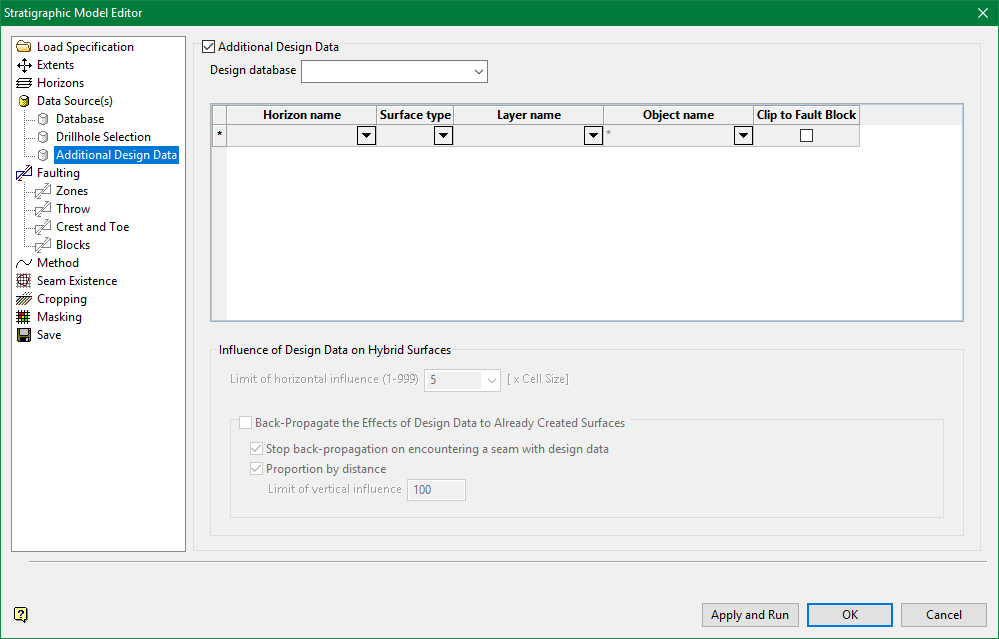Additional Design Data

Additional Design Data
Select this check box to incorporate pre-existing design data, such as crop lines, survey pickups etc., along with the interpolated mapfile points when creating surface models.
The options presented in the available grid will depend upon the chosen modelling method (selected through the Modelling section of the interface).
In the case of ‘Structural Surfaces’, which utilises only the roof and floor mapfile points, only additional design data representing either roof or floor information will be accepted. If the selected modelling method is ‘Stacking’, then additional design data representing roof, floor, thickness (horizon thickness), and midburden (mid/overburden thickness) can be included and will be available in the drop-down lists. This is due to the fact that the ‘Stacking’ method can use all these data types in the model creation process.
Note: For the reference surface required by the ‘Stacking’ method, only roof and floor data are allowable.
You will be required to nominate the design database of interest, the horizon the design data applies to and whether it is applying to the roof, floor, thickness or midburden. The particular layer and object will also need to be specified (wildcards can be used).
Note: As many input layers as required may be entered, however, only one layer per unique horizon/surface type combination may be used.
With the introduction of the Hybrid modelling method, additional parameters may be set to constrain the influence, both stratigraphically and in plan view of any additional design data.
Influence of Design Data on Hybrid Surfaces
The limit of Horizontal influence input is defined in terms of the number of grid cells you wish the influence of extra data (such as in pit survey pickups) will have on the seam modelling away from the data itself. Whereas the optional Back-propogate the effects of design data to already created surfaces inputs give some control over how far up and down the integrated stratigraphic model you want the structure of additional design data to influence adjacent surfaces.
Related topics
-
Data Source(s)
-
Faulting

